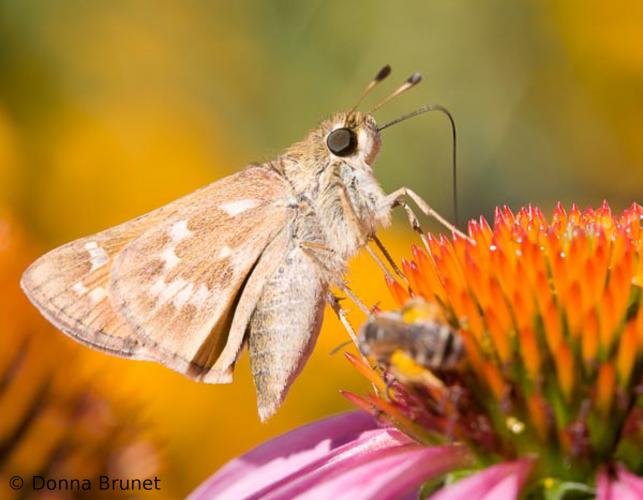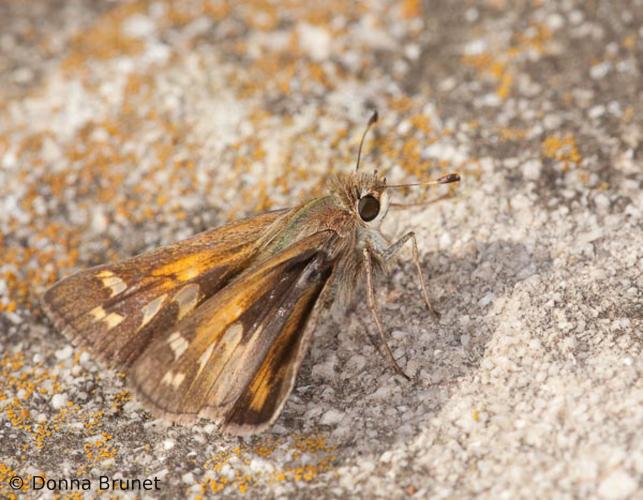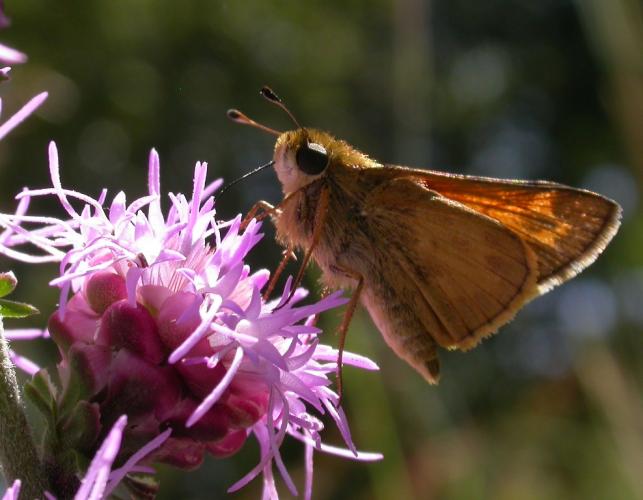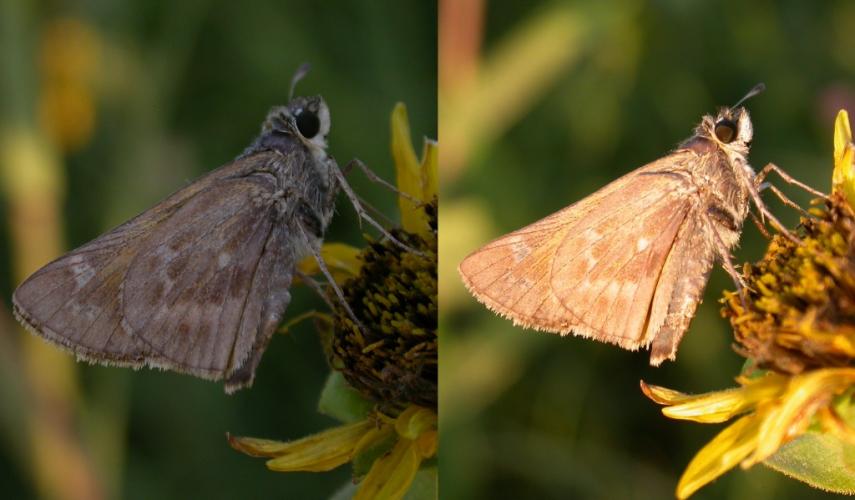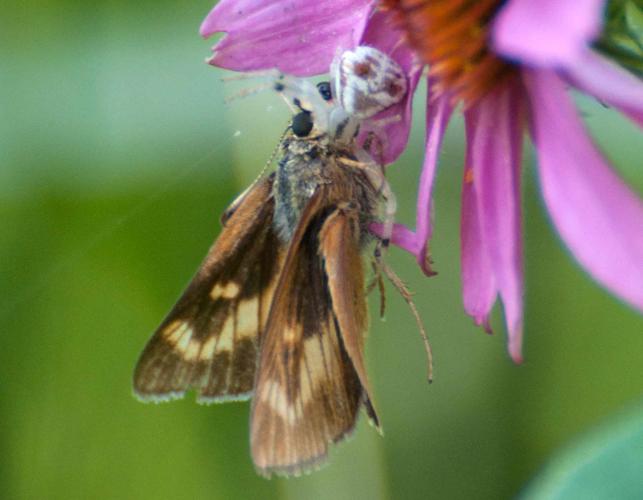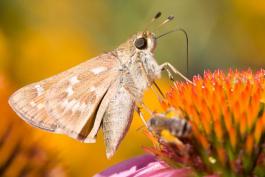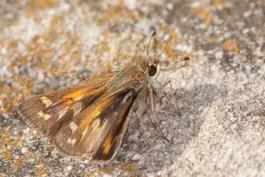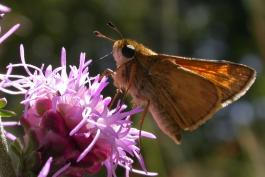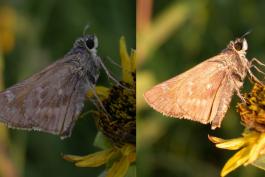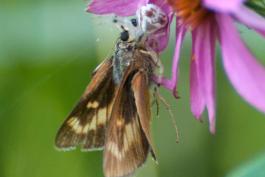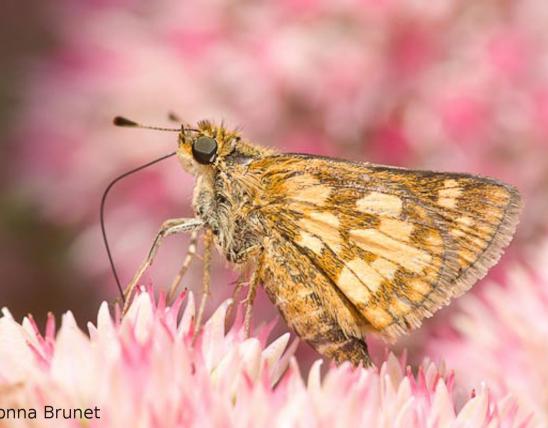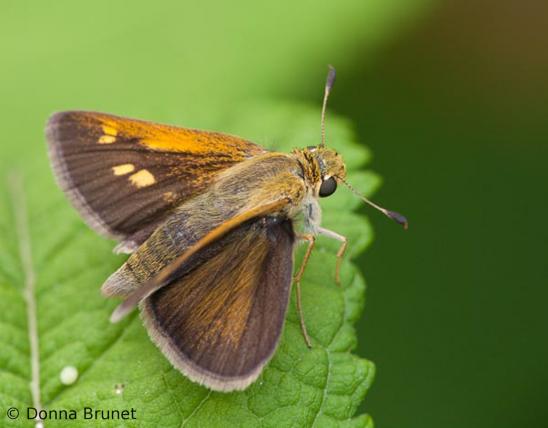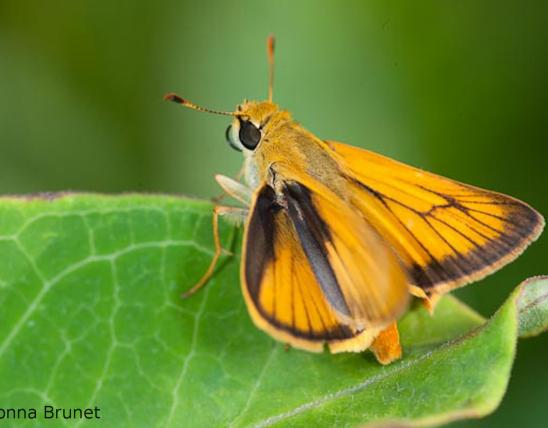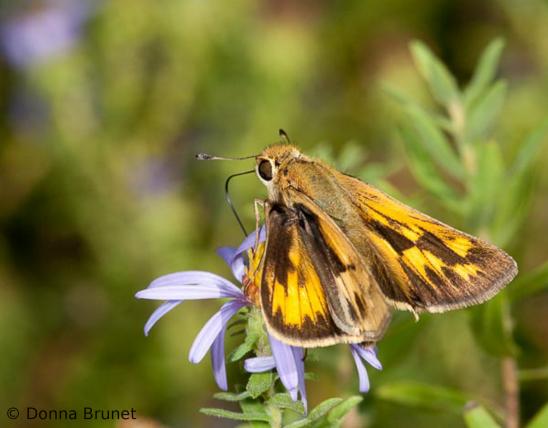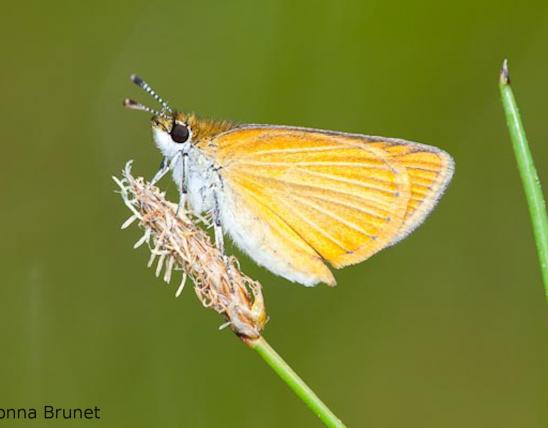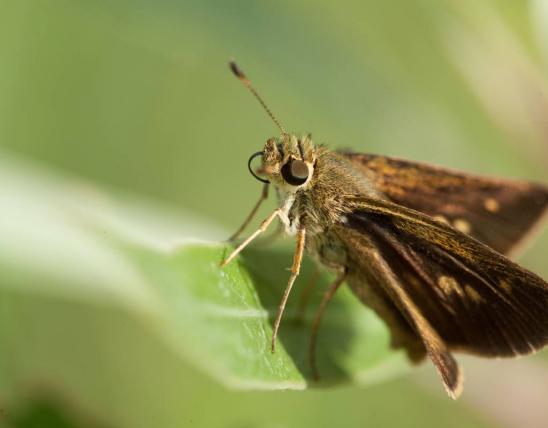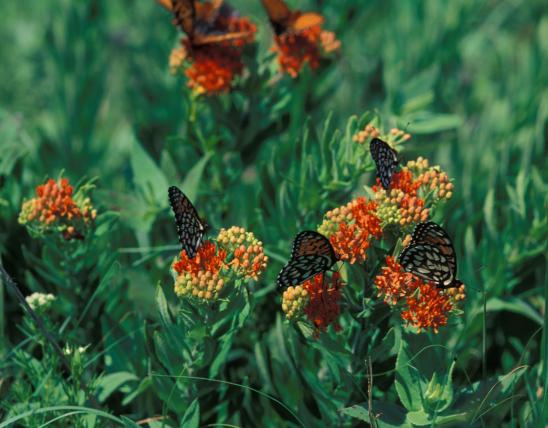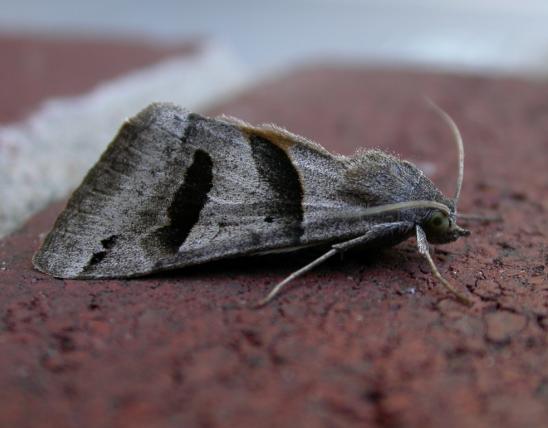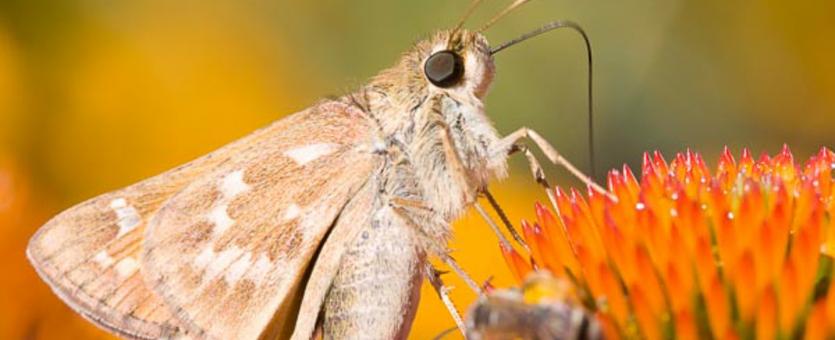
The sachem is one of several orange and brown grass skippers, and males and females look different.
The underside of males is orange with light brown markings, including an indistinct brown square in the center of the trailing edge of the hindwing; a fairly large lighter orange patch in the center of the hindwing usually comes to a V-shaped point near the trailing edge. On the upperside forewing, there is a distinctively very large stigma (a blackish patch that emits scents that attract females), which is hard to miss.
The underside of females is light brown with pale spots forming a chevron (V-shape) on the hindwing. The upperside forewing is black and orange, with some large white or transparent spots on the dark center.
Larvae are dark green with tiny black dots and a dark line along the back; the head is black.
Similar species: The sachem can be distinguished from the various Hesperia species by its more hooked antennae, V-shaped mark, and other details mentioned above.
Wingspan: 1–1½ inches.
Statewide.
Habitat and Conservation
As the growing season progresses, this skipper’s numbers increase. By late summer, this is one of the most common skippers in the state, occurring in prairies, fields, vacant lots, and residential areas. Adults are avid flower visitors. Territorial males boldly approach and chase away intruders, especially other insects, but also other animals — even humans!
Food
The caterpillars eat grasses, including Bermuda grass (Cynodon dactylon) and crabgrass (Digitaria). Adults drink nectar from a variety of flowers and also take moisture and mineral nutrients from wet ground — mud puddles, damp sand, and so on.
Status
Summer resident. It does not overwinter here.
Life Cycle
Sachems breed in Missouri from their April arrival into November. By late summer, this is one of the most common skippers in Missouri. Males perch in open, grassy locations waiting for females to approach. They fly out to inspect virtually any animal that comes near. Females lay eggs singly on the leaves of grasses. Caterpillars construct leaf shelters and bring pieces of grass blades back to the tent to eat. No stages of this skipper survive Missouri winters. Starting in spring, sachems that overwinter in states to our south (and their descendants) gradually repopulate our state.
Human Connections
“Sachem” (pronounced SAY-chum) is an English-language adaptation of an Algonquian word meaning “chief.” You might have heard the related word “sagamore.” Both terms are used in place-names and as school mascots, especially in New England, the homeland of the Native American tribes whose words they are.
The sachem, the fiery skipper, and the whirlabout (Polites vibex, which does not occur in Missouri) are sometimes called the “three wizards,” apparently because of their zippy flying movements.
Ecosystem Connections
Territoriality in butterflies — where males establish an area as their own and chase other males out of it — has been studied since the middle 1800s. Charles Darwin devoted a chapter to butterflies in The Descent of Man, discussing how territories and male-male contests can determine which males would beget offspring, and which would not.
